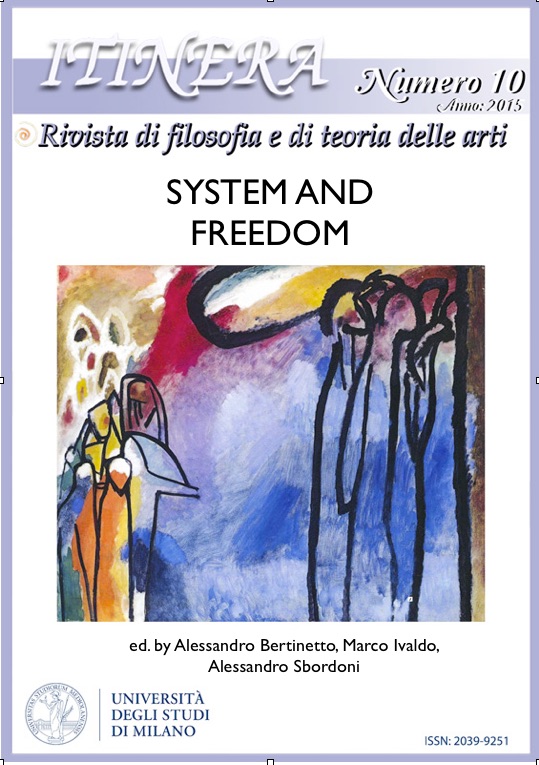Reflections on the margins of the philosophical translation of Luigi Pareyson's Aesthetics in Spanish: between formativity, improvisation and system.
DOI:
https://doi.org/10.13130/2039-9251/6665Abstract
The here discussed topic was inspired by the work of translation to Spanish (Xorki, 2014) of Luigi Pareyson’s Estetica. Teoria della formatività (Edizioni di Filosofia, 1954). The paper offers a reflection on the way in which improvisation, formativity, and system have played a role in the translation work. The main idea is the essentiality of congeniality for the activity of translation: only if you have captured the spirit and the sense of the text, having penetrated its sense, you are able to translate it to another language. In the case of philosophical translation, the translation of philosophical terms and, to a greater extent, of philosophical metaphors, requires a phase of understanding that goes beyond the understanding of the linguistics components and requires also an authentic interpretation of the meaning of the text. In a second phase, terms which have been chosen initially may not collect all the not dispensable nuances of the original: this is time then for improvisation, i.e., for “testing” and “trying” with terms that at first may not be the most logical and that however “work”, offering in the new edition of the book the nuance and meaning that are closer to the original text. I indicate several examples to illustrate this procedure: “spunto”, “tentare”, “riuscita”, “irrigidire”. The re-reading of the work after the election of such terms, shows whether the new text conveys the philosophical content and style of the original one as well as its systematic nature.
References
CITATI, Pietro, Leopardi, Mondadori, 2011.
LEOPARDI, Giacomo, Operette morali (1827), introduzione, commenti e note di Paolo Ruffilli, Garzanti 1982.
PAREYSON, Luigi, Estetica. Teoría della formatività, Edizioni di Filosofia, Torino 1954.
PAREYSON, Luigi, Estética. Teoría de la formatividad (1954), Edición, traducción e introducción de Cristina Coriasso Martín-Posadillo, prólogo de Gianni Vattimo, Xorki Editorial, Madrid 2014.
PAVESE, Cesare, Il mestiere di vivere, Diario 1935-1950, a cura di M. Guglielminetti e di L. Nay, introduzione di C. Segre, Einaudi 2000.
Downloads
Published
Issue
Section
License
The authors who publish in Itinera are required to accept the following conditions:
1. The authors retain the rights on their paper and lincese the journal the right of first publication. The paper is also licensed under a Creative Commons License, which allows others to share it, by indicating intellectual authorship and its first publication in Itinera.
2. Authors may adhere to other non-exclusive license agreements for the distribution of the published version of the paper (ex. deposit it in an institutional archive or publish it in a monograph), provided that its first publication in Itinera is indicated.
3. Authors can disseminate their paper online (ex. in institutional repositories or on their website) before and during the submission process, since this can lead to productive exchanges and increase quotations of the published work (See “The Effect of Open Access”).





